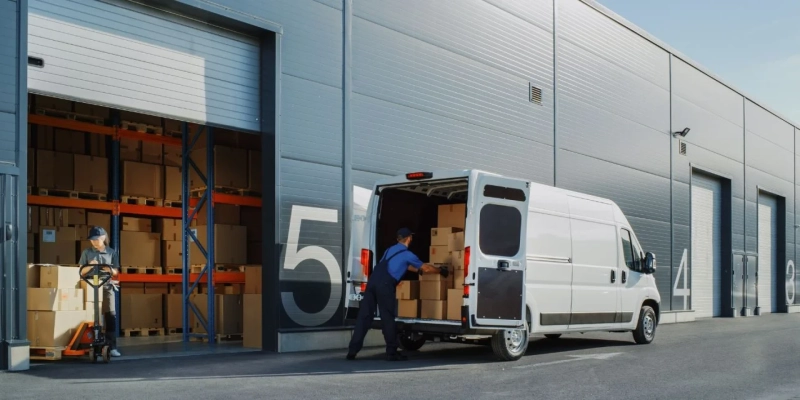Getting packages to people in busy cities is no easy task. Crowded roads, tight schedules, and strict environmental rules make it a real challenge. Urban logistics is about finding clever ways to deliver goods in bustling urban areas. This article dives into the main hurdles and shares straightforward ideas to tackle them. It’s written to help businesses deliver smarter, save money, and keep customers happy.
What is Urban Logistics?
Urban logistics means moving goods from warehouses to customers within city limits. It involves planning routes, managing fleets, and meeting tight delivery deadlines in crowded places. With more people shopping online and cities growing, companies must figure out how to deliver quickly without breaking the bank or harming the environment.
Why It Feels Like a Puzzle
City deliveries are tricky for several reasons:
- Busy Roads: Traffic jams slow down trucks and delay packages.
- Cramped Spaces: Narrow lanes and scarce parking spots complicate things for drivers.
- Customer Demands: Shoppers want their orders fast, often within hours.
- Eco Rules: Cities push for less pollution, so companies need cleaner ways to deliver.
These issues turn urban logistics into a puzzle that needs solving.
Major Hurdles in City Deliveries
1. Traffic Troubles
City streets are often packed with cars. Delivery trucks get stuck, which delays drop-offs and burns extra fuel. This can frustrate customers waiting for their packages.
2. Last-Mile Headaches
The final step—handing the package to the customer—is the toughest. It can eat up half the delivery budget. Navigating busy areas and finding parking adds to the hassle.
3. Pollution Problems
Trucks and vans add to city smog. Many places now have rules to cut emissions, so companies must find ways to deliver without polluting too much.
4. High Expectations
Online shopping has changed the game. Customers want packages fast, with updates on where their order is. Meeting these needs in a crowded city is hard work.
Practical Fixes for City Deliveries
Here are some hands-on ways to make urban deliveries smoother. These ideas can save time, cut costs, and keep customers smiling.
1. Smarter Route Planning
Special software can map out the best paths for drivers. It checks traffic, roadblocks, and delivery times to pick the fastest routes. Drivers can also get live updates to avoid jams.
- Why It Works:
- Speeds up deliveries.
- Cuts fuel costs.
- Keeps customers happy with timely arrivals.
2. Cleaner Delivery Options
Using electric vans or bikes helps cut pollution and meets city rules. For example, a logistics company Saudi Arabia might switch to electric trucks for deliveries in Jeddah. These options are quiet and don’t harm the air.
3. Small City Warehouses
Setting up mini-warehouses near city centers can make a big difference. These spots, called micro-fulfillment centers, keep popular items close by, so deliveries are faster and cheaper.
4. Creative Last-Mile Ideas
New methods can ease the final delivery step:
- Drones: Small drones can zip packages to customers, dodging traffic.
- Cargo Bikes: Electric bikes slip through tight streets with small loads.
- Lockers: Secure pickup boxes let customers grab orders when it suits them.
5. Team Up Locally
Working with nearby businesses or workers can boost efficiency. For instance, partnering with industrial manpower solutions KSA can provide extra hands for busy delivery days, keeping things on track.
6. Use Helpful Tech
Technology can simplify deliveries:
- Smart Predictions: Tools guess how many orders will come and plan ahead.
- Live Tracking: Shows where trucks and packages are at all times.
- Data Insights: Spots patterns to make deliveries smoother.
Why Fixing This Matters
Tackling these delivery challenges brings big rewards:
- Lower Costs: Better routes and vehicles save money.
- Happy Customers: Quick, reliable deliveries build loyalty.
- Cleaner Air: Eco-friendly methods meet city goals.
- Edge Over Rivals: Companies that deliver well stand out.
Real-World Wins
Example 1: Electric Van Success
A delivery business in a big city switched to electric vans. Fuel costs dropped by a third, and pollution went down too. Customers loved the green approach, and the company got more orders.
Example 2: Mini-Warehouse Boost
A retailer opened small warehouses in city neighborhoods. Deliveries got twice as fast, and more customers chose same-day options. This led to more repeat buyers.
Steps to Get Started
Want to improve your city deliveries? Try this:
- Look at Your Setup: Find what’s slowing you down.
- Add Tech: Use route planners or tracking tools.
- Go Green: Try electric vans or bikes.
- Work with Locals: Partner with nearby businesses or workers.
- Check Progress: Track delivery times and customer comments.
What’s Coming for Urban Logistics?
City deliveries will keep changing. Here’s what’s on the horizon:
- Robot Deliveries: Driverless vans could handle drop-offs.
- City Tech: Delivery systems will tie into smart city plans.
- Green Push: More cities will demand eco-friendly deliveries.
Staying ready for these shifts will help companies keep up.
Conclusion
City deliveries are tough, but smart solutions can make them easier. Better routes, green vehicles, and local partnerships can transform how goods move in urban areas. Teaming up with a logistics company or industrial manpower solutions can give an extra edge. These steps help businesses save money, satisfy customers, and support cleaner cities. Start now to make your deliveries faster and better.



